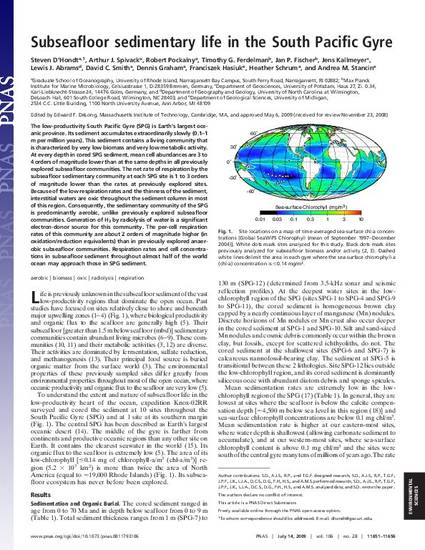
Article
Subseafloor sedimentary life in the South Pacific Gyre
Proceedings of the National Academy of Sciences
(2009)
Abstract
The low-productivity South Pacific Gyre (SPG) is Earth's largest oceanic province. Its sediment accumulates extraordinarily slowly (0.1–1 m per million years). This sediment contains a living community that is characterized by very low biomass and very low metabolic activity. At every depth in cored SPG sediment, mean cell abundances are 3 to 4 orders of magnitude lower than at the same depths in all previously explored subseafloor communities. The net rate of respiration by the subseafloor sedimentary community at each SPG site is 1 to 3 orders of magnitude lower than the rates at previously explored sites. Because of the low respiration rates and the thinness of the sediment, interstitial waters are oxic throughout the sediment column in most of this region. Consequently, the sedimentary community of the SPG is predominantly aerobic, unlike previously explored subseafloor communities. Generation of H2 by radiolysis of water is a significant electron-donor source for this community. The per-cell respiration rates of this community are about 2 orders of magnitude higher (in oxidation/reduction equivalents) than in previously explored anaerobic subseafloor communities. Respiration rates and cell concentrations in subseafloor sediment throughout almost half of the world ocean may approach those in SPG sediment.
Disciplines
Publication Date
July 14, 2009
DOI
10.1073/pnas.0811793106
Publisher Statement
Copyright 2009 The Authors.
Citation Information
Steven D’Hondt, Arthur J. Spivack, Robert Pockalny, Timothy G. Ferdelman, et al.. "Subseafloor sedimentary life in the South Pacific Gyre" Proceedings of the National Academy of Sciences Vol. 106 Iss. 28 (2009) p. 11651 - 11656 Available at: http://works.bepress.com/franciszek_hasiuk/2/
